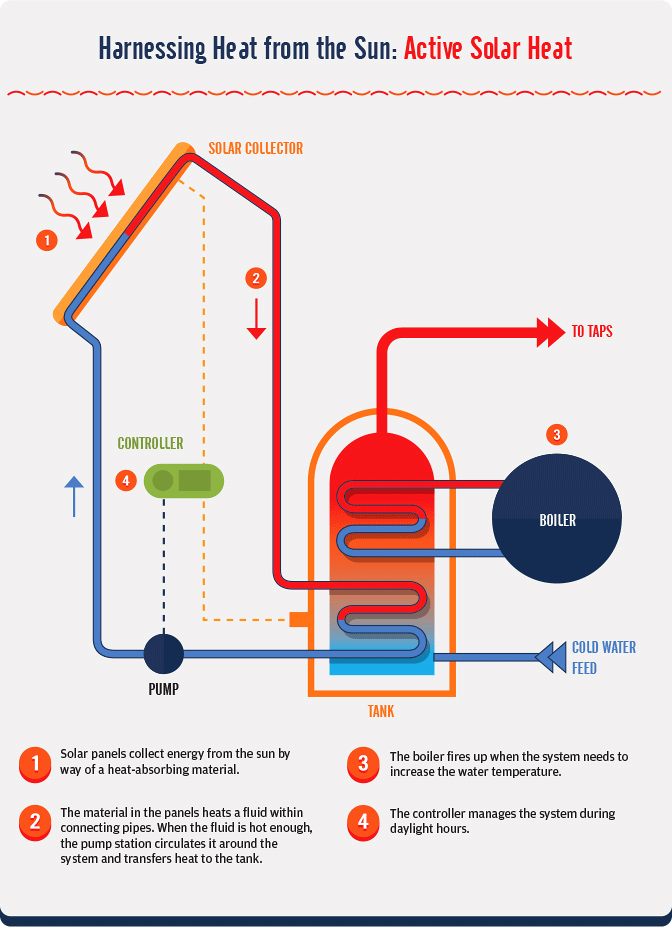By Emily Bornhop
Solar Energy History
Every industry, every company, and even the existence of each person is ruled by demand. Bodies need food and water to survive. Companies need capital. Do you remember the day when your high school biology teacher, with varying degrees of accuracy, drew a big circle on the board? Mine added a bunch of radial dashes and said, “Behold, students, the sun. The sun is the source of all energy for all life on earth.” Ancient humans knew how powerful the sun was. Sun and rain brought food. But even twenty years ago, it would have been hard to imagine the extent to which humans would exploit the sun for modern conveniences like electricity.
The U.S. Department of Energy dates the first use of solar technology to the seventh century B.C., when humans first burnt ants by channeling the sun’s rays through a magnifying glass. In 1767, Horace De Saussure was said to have built the first solar collector. Edmond Becquerel discovered that adding light to some electrodes made power. Fast forward to 2008 or 2009. I remember hearing about solar power that year for the first time. How amazing. Why not make use of the most natural lasting power source? Then someone mentioned how expensive harnessing solar energy was.
Solar Millennium
Beau Blumberg started working in solar energy around the same time I first heard about it. He tripped into the solar industry right after graduating from college in 2008. He spoke with me about his experience with the ups and downs of the solar industry–the solar coaster. His first job was at SunEdison, which declared bankruptcy last month.
At the start of Blumberg’s career, commercial solar was selling for 17-22 cents per kilowatt-hour in New Jersey. Residential solar was even more expensive at around nine dollars per watt. For those that don’t want to do the math, installing an average sized solar system for a residence cost about $50,000 in 2009. Since then, Blumberg has enjoyed seeing flashy innovations come and go. He is amazed by the price drops that have occurred in the past few years.
Most of these price changes happened in conjunction with a change in the mode of funding. In 2004, solar was mostly funded by power purchase agreements (PPAs). In a PPA, solar developers front the money for design and installation and charge the customer for power. As an incentive for installing a renewable source of energy, homeowners and developers received a federal cash rebate for new solar installations. In 2005, the government implemented the solar Investment Tax Credit (ITC). Before the ITC, developers were able to fund new installations from cash rebates. Now, developers needed to wait a year to get paid or find financiers for their installations. They sold assets to the bank and worked off of leases provided to them by the bank. After a little time, developers could grow their business independently. As the recession hit, customers paying close attention to their finances began to notice they were saving money by installing solar systems. Real Estate Investment Trusts (REITs) started to express interest in solar installation. Solar was a new, potentially volatile technology, but the normally reliable real estate market was just as volatile. By investing in new solar, REITs were able to decrease their tax burdens, developers found willing investors, and solar really started to take off. Projects exploded in Arizona and Southern California, following the footprint of REITs.
Though the ITC now gives a 30% tax break through 2019, it was originally set to expire in 2015 and it caused some uncertainty in the markets. Financing solar had proved mostly lucrative, but without tax credits, financiers were less tempted to invest. Since large or utility scale solar installation takes a lot of front-end investment, large-scale growth slowed with the market uncertainty. YieldCos are now getting a lot of attention as a way to fund solar, but I’ll leave it to the folks at Forbes to explain this financial engineering to you.
The Future is Now
With steadily falling prices and growing popularity, funding for solar isn’t becoming any simpler. Big names go under. “No one’s job is safe, but I think everyone is in agreement that the industry is secure,” Blumberg said. The U.S. Department of Energy has already achieved success with the SunShot Initiative in California and many other states. In some U.S. markets, solar energy now costs around $2 per watt, making it a fair competitor with grid energy. As of February 2016, one million solar installations have occurred in the U.S.
People started talking about how to store solar energy in 2008, but companies are just beginning to focus on these solutions. How do we continue to use the sun’s energy after it sets? Efficient solar energy storage is surprisingly difficult. Utility scale development has continued to slow. Electric vehicles are zooming around town. Some utility companies, such as SCE, Duke, and ConEd, have created solar development branches.
Community solar, a way for apartment renters to buy into renewable energy, is searching for footing in operation and policy. Elena Lucas, Cofounder of UtilityAPI, likes to call community solar “the Wild West” of the industry. Who will pay for apartment dwellers to bask in solar energy? Are renters buying panels? Are they just buying a share of energy? Who will control the maintenance of these community solar systems? Will these systems be equipped to store energy?
Right across the Bay, San Francisco just passed a law requiring all new buildings less than ten floors to install solar panels. Not a day too late, this country is making the transition to renewable energy. It isn’t just happening here in California. People all over the country are talking about solar. SEIA’s solar database shows the solar sprawl.
Where do we go from here? Blumberg thinks solar developers will eventually create the Dyson sphere, a giant structure to capture and store all of the sun’s usable energy. He admits this won’t happen in his lifetime. The world has already seen a decline in use of natural gas and coal. Solar is cheaper anyway. Now solar isn’t only the smartest choice for the environment, but it is also the smartest business decision.
“I grew up toddling around manholes as a kid in Long Island. My dad was a project manager at a telecommunications company. I was excited to get into solar energy because I applied to 250 jobs since I didn’t have the pre-reqs for an Astronomy PhD. SunEdison returned my email. I figured, at least we’re still talking about power coming directly from a celestial body. I’m happy to be doing some good for the environment.”
 Emily Bornhop grew up in Nashville, Tennessee. These days you can find her biking around Oakland, California. She is getting a crash course in renewable energy technology as an intern at UtilityAPI.
Emily Bornhop grew up in Nashville, Tennessee. These days you can find her biking around Oakland, California. She is getting a crash course in renewable energy technology as an intern at UtilityAPI.
Beau Blumberg runs the support desk at UtilityAPI.



























